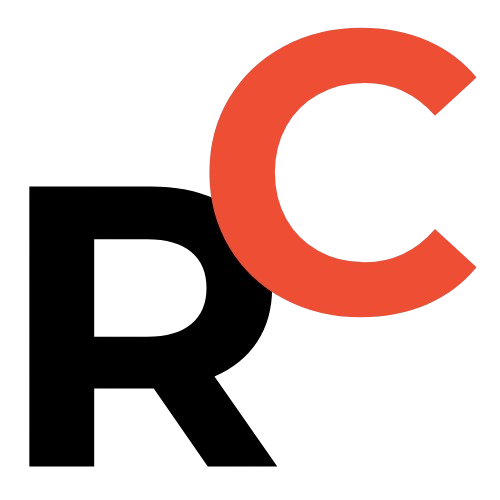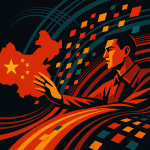Key Points
- Chinese photovoltaic stocks are surging due to a “perfect storm of three powerful catalysts,” with the overall Photovoltaic Index jumping nearly 2% and several individual stocks hitting their daily trading limits.
- Catalyst 1: Beijing’s Ministry of Industry and Information Technology (MIIT) announced a special energy conservation inspection for 41 polysilicon companies, aiming to weed out inefficient producers and improve industry health.
- Catalyst 2: Off-the-charts growth in solar power generation, with China adding a massive 212 GW of new grid-connected PV capacity in H1 2025, bringing total installed capacity to approximately 1,100 GW (a 54.1% year-on-year increase).
- Catalyst 3: SC New Energy (Jiejia Weichuang 捷佳伟创) released a strong H1 2025 net profit forecast of ¥1.7 billion to ¥1.96 billion RMB, representing a 38.65% to 59.85% YoY growth, indicating robust company performance.
- Analysts believe these factors signal the end of “irrational competition” in the PV sector, leading to a potential rebound in industry prices and profit recovery as the market moves towards orderly competition and technological innovation.

China’s photovoltaic stocks are on fire, and if you’re an investor, founder, or tech enthusiast, you need to know why.
On August 1, 2025, while the broader A-share market was trending down, the solar sector lit up, with several major players hitting their daily trading limits.
This wasn’t a random market blip.
It’s a perfect storm of three powerful catalysts signaling a potential turnaround for the entire industry.
Let’s break it down.
The Market Rally: A Quick Snapshot
First, let’s set the scene with the hard numbers.
The overall Photovoltaic Index jumped nearly 2%, a strong move against the market tide.
But the real action was in individual stocks:
- SC New Energy (Jiejia Weichuang 捷佳伟创) [SHE: 300724]: Skyrocketed to its 20% daily trading limit within minutes of the market opening.
- Wenke Share (Wenke Gufen 文科股份) [SHE: 002775] and Shuangliang Eco-Energy (Shuangliang Jieneng 双良节能) [SHA: 600481]: Quickly followed, also hitting their daily limits.
- Hi-Young Material (Haiyou Xincai 海优新材) [SHA: 688680]: Briefly touched its 20% limit and held strong with a gain of over 15%.
Other heavyweights like Daqo New Energy (Daquan Xinneng 大全能源), Sungrow Power Supply (Yangguang电源 阳光电源), and Aiko Solar (Aixu Gufen 爱旭股份) also saw major gains.
So, what’s fueling this buying frenzy? It boils down to three core reasons.

Resume Captain
Your AI Career Toolkit:
- AI Resume Optimization
- Custom Cover Letters
- LinkedIn Profile Boost
- Interview Question Prep
- Salary Negotiation Agent

Catalyst #1: Beijing’s Crackdown on Inefficient Production
The first major driver is a classic, top-down policy move from the government.
On August 1, the Ministry of Industry and Information Technology (MIIT) announced a nationwide special energy conservation inspection for the polysilicon industry.
What’s the TL;DR?
- The Goal: To weed out inefficient, energy-guzzling producers and clean up the industry.
- The Target: 41 specific polysilicon companies across key regions like Inner Mongolia, Sichuan, and Yunnan are on the inspection list. This includes major players like subsidiaries of Sichuan Yongxiang New Energy and Inner Mongolia Daqo New Energy.
- The Deadline: Regional authorities have until September 30, 2025, to submit their findings.
Why this matters: This government-led inspection is a clear signal that Beijing wants to end the era of “growth at all costs.”
By enforcing stricter energy standards, the policy favors the more technologically advanced and efficient companies, effectively clearing the field for the industry leaders and squeezing out weaker competitors.

Catalyst #2: Off-the-Charts Growth in Solar Power Generation
The second catalyst is pure, undeniable growth in real-world adoption.
Fresh data from the National Energy Administration (NEA) for the first half of 2025 is simply staggering.
The Growth Metrics:
- New Capacity: A massive 212 GW of new grid-connected PV capacity was added in just six months. That’s split between ~100 GW from centralized plants and ~113 GW from distributed projects.
- Total Capacity: By the end of June 2025, China’s total installed PV capacity hit approximately 1,100 GW. That’s a 54.1% year-on-year increase.
- Power Generated: The country generated 559.1 billion kWh from solar in H1 2025, up an incredible 42.9% YoY.
- Efficiency: The national average utilization rate for PV power generation stands at a very healthy 94%.
This isn’t just a forecast or a trend; it’s a fundamental, large-scale shift in the country’s energy landscape, proving the massive underlying demand for solar technology.
- New Grid-Connected PV Capacity (H1 2025): 212 GW
- Total Installed PV Capacity (End of June 2025): ~1,100 GW (54.1% YoY increase)
- Solar Power Generated (H1 2025): 559.1 billion kWh (42.9% YoY increase)
- National Average Utilization Rate: 94%

Find Top Talent on China's Leading Networks
- Post Across China's Job Sites from $299 / role, or
- Hire Our Recruiting Pros from $799 / role
- Qualified Candidate Bundles
- Lower Hiring Costs by 80%+
- Expert Team Since 2014
Your First Job Post

Catalyst #3: A Key Player Drops a Monster Earnings Report
Finally, nothing gets the market more excited than a key company absolutely crushing its numbers.
On July 31, solar cell equipment leader SC New Energy (Jiejia Weichuang 捷佳伟创) released a jaw-dropping performance forecast for the first half of 2025.
The Financials:
- H1 2025 Net Profit Forecast: Expected to land between ¥1.7 billion and ¥1.96 billion RMB ($237 million to $273 million USD).
- Year-over-Year Growth: That’s a massive YoY jump of 38.65% to 59.85%.
The company attributed this incredible growth to simply converting its huge backlog of existing orders into recognized revenue.
This performance is no surprise to those watching closely. SC New Energy is a tech leader with advanced capabilities in next-gen solar cells like TOPCon, HJT, XBC, and perovskite, positioning them perfectly for where the industry is headed.
Just last year, in 2024, the company’s revenue grew 116.26% to ¥18.887 billion RMB ($2.63 billion USD).
- Net Profit Forecast (RMB): ¥1.7 billion – ¥1.96 billion
- Net Profit Forecast (USD): $237 million – $273 million
- Year-over-Year Growth: 38.65% – 59.85%
- Key Driver: Conversion of existing order backlog into revenue

ExpatInvest China
Grow Your RMB in China:
- Invest Your RMB Locally
- Buy & Sell Online in CN¥
- No Lock-In Periods
- English Service & Data
- Start with Only ¥1,000

The Big Picture: What’s Next for China’s PV Sector?
So, what does this all mean for the future?
Analysts are pointing to one major theme: a definitive end to “irrational competition.”
For some time, the industry has been plagued by companies undercutting each other with low-ball prices, leading to a brutal race to the bottom that crushed profit margins for everyone.
That seems to be changing, fast.
Expert Analyst Takeaways
- HSBC Jintrust Fund: They see policies against “irrational competition” driving a rebound in industry prices. In the long term, growing global demand for clean energy provides a massive runway for growth.
- Zhongyuan Securities (Zhongyuan Zhengquan 中原证券): They believe the crackdown on low-price, disorderly competition is the key theme for the next 18 months. They advise focusing on two things: “capacity clearance” (weaker players getting flushed out) and “new technology iteration.” With valuations at historic lows, now is the time to watch leading firms in polysilicon, PV glass, and next-gen cell tech like BC and perovskite.
- CITIC Securities (Zhongxin Zhengquan 中信证券): They note that fighting “irrational competition” has been elevated to a national strategic action. The PV industry is the main battleground. As the market returns to orderly competition, the entire industry chain should see a reasonable price rebound and profit recovery. They emphasize that tech innovation and product differentiation are the ultimate escape routes from price wars.
The Bottom Line
The recent surge in Chinese photovoltaic stocks isn’t a fluke. It’s backed by strong government action to improve industry health, incredible real-world growth, and stellar performance from leading companies.
Investors are betting that the era of “irrational competition” is finally ending, paving the way for a more profitable and sustainable future for the industry’s leaders.
Keep a close watch on this space—the powerful turnaround in China’s photovoltaic stocks surge could be just getting started.




